Malmö – Mother and Arne
My passion for the theater most likely started the day ‘we’ married Arne, as I famously said at the dinner table one evening in the forties. A Freudian slip. Yes, ‘we’ had indeed married Arne, my wonderful stepfather, Arne Lydén, who had lifelong ties to the theater, its history and its various realizations in prewar Germany of the Weimar Republic, as well as in Scandinavia. Arne spent a year in Berlin in the late twenties, and above all watching theater. He supported himself by writing cultural articles for a Swedish newspaper, most likely Svenska Dagbladet. In inflation-torn Germany Swedish kronor were highly valued and Arne never needed a lot of material possessions to get along perfectly well in life.
In Berlin he learned first-hand about Max Reinhardt, the theater director and actor who revolutionized German theater, and who has had a very strong influence on Western theater in general. This included not just acting and powerful staging techniques but also stage design, music and choreography. He has gone down in theater history as the man who set his indelible imprint on ‘modern’ theater.
But he was not alone. There were other men who had marked the development of the theater of those days. Above all, there was the Russian actor and director, Konstantin Stanislavski, of a somewhat older generation. Stanislavski had a deep-going and worldwide influence on the theater of that era, beginning in the late 19th century. He died in 1938. This was theater history, and Arne most likely became acquainted with the Russian genius in Berlin as well. Stanislavsky’s influence went far outside his own country and he even traveled to the United States where he became known as the Russian innovator of modern theater.
Later, Arne studied the history of the theater (Teaterhistoria) with Professor Agne Beijer at Stockholms Högskola, which became Stockholms University. Agne Beijer became his great friend.1 Arne spoke about Stanislavski with the most profound respect, indeed as the father of modern theater. Out with the French declamatory style of acting that survived at the Comédie-française to some degree even into the 20th century.
My parents were both linked to the new City Theater in Malmö (Malmö Stadsteater). Arne was a theater director from the opening of this new and modern theater in September 1944. My mother was the theater’s photographer from the beginning of 1945, and she kept up that activity alongside her own studio.
In the big city Mother had started out in the brand new and very fashionable Trygg’s Building at Gustav Adolfs Plaza in 1938. At that time there was still optimism in the air. People were hoping that Hitler was going to keep his fascism, which they usually knew very little about, inside the German borders. The British Prime Minister Neville Chamberlain came back from the conference in Munich in September 1938 and declared to the British people abd to the world that there would be “peace for our time”, thereby accepting Hitler’s annexation of Sudetenland, the German speaking border area of Czechoslovakia. People believed in a possible peace because they wanted to believe.
Times got very dark towards the end of 1939, however, and Britain and France declared war on Germany in September when Hitler invaded Poland.
After our seemingly carefree evacuation in spring and summer1940 in northern Småland, Mother went on with her own business for another year or two.
However, with the war came general insecurity, especially for us with the horrible years of divorce from my much beloved father. Mother needed increased support and stability and so accepted an offer to manage a photography business called Polyfoto, a chain of several photo stores all over Sweden in fact, where multiple photos were produced, all on one plate.
Polyfoto was a very uninspiring photo store before Mother took it over. She set about teaching the ‘girls’ who took the poly-photos. The plate, protected by a cassette, was what the photos were exposed on. In professional photography in those days, there was no film, just a specially treated plate. She taught the girls about lighting and composition, and generally loosening up an often uncomfortable customer. She upgraded the entire business from third class to top class. The number of pictures on one plate was also changed from the ridiculous tiny 48 photos to 20 or even 12 according to the customer’s preference.
In the back of the premises, a studio was installed that was Mother’s own, with a nice-looking waiting room and a small dressing room. So ‘Mohlins foto’ remained, even though the spelling changed to ‘Molins foto’ in the early forties.
She hired a business to decorate the shop window and it became by far the most attractive photography window in Malmö. She gave courses in photography to Polyfoto photographers from all over the country.
______________
In the fall of 1944 Malmö finally had its own home for drama, as well as for musicals, ballet and concerts. The old theater Hippodromen, did only musicals under the direction of Oscar Winhe, who also moved to the new city theatre, where he directed the musicals but also turned out to be a superb actor. I was totally gripped by his performance as Creon in Antigone by Jean Anouih. Photos here (Scroll down).
Sandro Malmquist was our first Director of the new theater, and he was a thoroughly learned theater man who had actually studied with Max Reinhardt in Berlin in the twenties and also, after that, with the great actor Louis Jouvet in Paris.
The people who worked for the theater from the Director to the stage workers, the seamstresses and the wig makers got to be like a huge family. Funnily enough I felt so intimately a part of the theater that I always referred to plays that were produced at our new theater as ‘our’ performance. ‘We’ did such and such a play in Malmö.
It should be mentioned also, that Malmö Stadsteater was an innovator in Sweden for school performances, for both theater and concerts. Arne was the organizer of those activities. The funny thing was that when we school children (I was 11 at the time and still in grade school) saw the inauguration performance of Shakespeare’s ‘A Midsummer Night’s Dream’, a man came out from behind the heavy red curtains, decorated with theater masks in white. He talked to us briefly about Shakespeare and the play we were about to see. Very useful, since we definitely didn’t know any more than the name of Shakespeare as a very old English playwright. That man was Arne who was going to be my stepfather. We saw a tall, somewhat formal, dark-haired man.in a dark suit who had the gift of getting our attention, of spanning the bridge between audience and stage.
Years later, when Arne was in Nyköping without ever having broken his close links to the theater, he was at a gathering of teachers in Stockholm where Ingmar Bergman proudly spoke about how he had for the first time in Swedish history introduced school theater in Sweden, in his case most likely in Stockholm. Arne of course knew Ingmar Bergman well. He got pretty irritated and stood up and said loudly: Ingmar, you certainly know that that’s not true. We had school theater at Malmö Stadsteater from the very beginning in 1944 when you had barely started your career. Arne forgot to tell me what Bergman’s reply to this was. It would have been interesting to know.
Speaking about Ingmar Bergman, once when he was directing a play at our theater, he came up to Mother’s atelier where she was taking close-ups of the actors. He turned to Mother and said ‘Shouldn’t you take the picture in such and such a way instead?’ Mother looked at him with proud eyes and said. ‘Who is the photographer here, you or I?’ 2
_______________
Copenhagen, the way it was – and still is
World War II had been over since May 1945 and the traffic between Malmö in Sweden and the Danish capital, Copenhagen, had resumed at a normal pace across Öresund, the sound that separates the two countries. The once German-occupied country was getting back to normal.
The Royal theater in Copenhagen, Det Kongelige Teater, was in those days the home of theater, opera and the world-famous Danish ballet. It was one of the foremost theaters in Europe and the actor Poul Reumert was an international celebrity.
One autumn day in 1948 Arne had arranged a trip for all of us, plus Gun’s boyfriend, Lars, to go to Copenhagen. We were going to make the trip across the Sound, Öresund, to see Molière’s Tartuffe at ‘Det Kongelige’. Starring were the monumental Poul Reumert as Tartuffe and the almost equally famous Bodil Ipsen as the rich man Orgon’s wife, Elmire. What a dream! This was history played out in real life and of course, even at the time, when I was 15 years old, I realized what an extraordinary event this was.
Poul Reumert had played Tartuffe innumerable times, the first time in 1922 at Det Kongelige. He had even been a guest actor at La Comédie Française in 1925, the only foreigner to perform on the French national stage, at least at the time. He also appeared at le Théâtre National de l’Odéon in Paris and did guest performances at several other European theaters.
We set out on the boat – there was one that left every two hours for Copenhagen. It took two hours for the crossing since it had to go up north to the mid channel in the Sound and then back south to Copenhagen. The small ferries and hovercraft that came in much later took about half an hour, but these were the old days, and the big boats had deep keels. With Lars who was invited to come with us, there were five of us crossing the Sound on this windy day in 1948. The sea was rough even in the Sound and I remember vividly lots of people being seasick and hanging their heads over the gunwale.
The boat landed in Nyhavn, the ‘new harbor’, which was anything but new, and it was just a short walk from there to Kongens Nytorv where Det Kongelige Teater is located. People walked in those days. Thus began our historic visit to Copenhagen and Det Kongelige Teater, at a time when the hardship of the war years was not yet quite forgotten.
The performance was of course just what you wanted from Tartuffe, a perfectly enacted spoof on hypocrisy, lust and greed. It is serious comedy at its sarcastic best and lots of laughs from a delighted audience made for an unforgettable theater evening at one of the best theaters in Europe. I can still remember a very funny scene where Tartuffe – Poul Reumert – is nearly caught in his devious attempts to lustfully seduce Elmire, Bodil Ipsen, the lady of the house. Just as Elmire’s husband, the rich man Orgon, who is entirely taken in by the ‘holiness’ of Tartuffe, enters the room, Tartuffe cowardly hides under the table. Danes are, generally speaking, far less serious than Swedes and they seem to always be ready for a good laugh. And laugh they did.
Fortunately I had read the play before the event, since the Danish language is not very easy to understand for Swedes, particularly not from the stage.
_____________________
This was probably my first visit after the war to Copenhagen, which seemed to have recovered surprisingly fast from the hard years during the Nazi occupation. At least that’s the way it seemed. At Kongens Nytorv (The King’s New Plaza) where the Royal theater is located, there is also the elegant Hotel d’Angleterre, a huge white edifice that the German military, the SS and the Wehrmarcht, took over for their headquarters during the occupation. It was quickly restored to its original usage after the liberation in May 1945.
In somewhat layer years we, I and my friends, liked to take a day trip to the very cosmopolitan capital of Denmark, or actually of Scandinavia in many ways. We took the 2-hour boat, and later on a big new ferry, ‘Öresund‘, where you got an excellent smorgasbord for not very much in terms of money, and there was no delicious smorgasbord food missing from that table, except maybe Russian caviar and foie gras.
But we young people didn’t take the boat to Copenhagen for the food or for the very special Aalborg aquavit, called snaps in all the Scandinavian languages (Schnapps in German). We went to Copenhagen to breathe the air of the jovial big city. The Danes have a quality that there is no other word for in any language I know than the German word Gemüt, even if jovial gets rather close to the idea of Gemütlich. One thing that does irritate the Danes though is when Stockholm people with their quite different accent from us people from Skåne in vain try to make themselves understood or to understand. Malmö is located in the southernmost province of Sweden and we don’t have any real difficulty understanding Danish, at least as spoken in Copenhagen.
At that time, around 1950, we went to Copenhagen with friends, in groups, without parents, or even once on a field trip with our Latin teacher to visit the world-famous museum, Glyptoteket, a marvel of ancient Greek and Roman sculptures as well as the Dutch and Flemish masters and Danish and French 19thcentury paintings. This was the first time I saw a real Van Gogh or a Renoir painting and I was impressed. Glyptoteket is also a marvel in terms of its architecture and its Winter Garden. It is simply breathtakingly beautiful.
As teenagers, when we wanted to do something really special, we would go to Copenhagen for a day out, stroll along the wonderfully colorful and cosmopoitan street called Strøget, going from The King’s New Plaza, Kongens Nytorv, between fashionable stores up to Rådhuspladsen (the City Hall Plaza), the modern center of the city. Strøget means the street where you stroll.
The long street actually has many different names, but in its entirety it is always called Strøget. We would go shopping, if we had some money, or just look around at all the beautiful things at Illum and Magasin du Nord, department stores which we never saw the like of, unless we traveled all the way to Stockholm. And even so, NK – Nordiska Kompaniet – in Stockholm could not really stand up to Illum.
We would peek at Nyhavn, where the boat from Malmö was moored. On the north side of the canal, across from where the boat was moored, was the long row of infamous smoky cafés or actually more like brothels, smoke-filled hovels in old warehouses. Sailors and dumb tourists would dance with gaudily dressed women in the middle of the afternoon, and everybody was smoking. Many all too curious Swedes would wake up after the stupor of the night with a bad hangover and empty pockets.
I once in my curiosity opened a door to one of these infamous cafés, and what I saw was so foreign to me that I felt as if it was a different world altogether. It was quite a shock. To me, a straight-laced young Swedish girl, to see the dancing couples outlined in a dense sea of smoke, was so curiously different from the world I knew that the picture got etched onto my retina forever.
How the Danes smoked! Denmark was probably the only country, in Europe at least, where you would see women smoking cigars or cigarillos. Heavyset middle-aged women would inhale the smoke lustily, and with a course laugh they would throw their arms around a Latin American sailor’s neck. The war was over. Life could begin anew.
From Nyhavn to Kongens Nytorv the change of scenery was at the time so striking that you would think you had landed in a different world. The equestrian statue of Christian V is in the very center of this beautiful plaza to remind us that he was the king who made it become what it is now, after its having been a dumping ground for cargo from ships that embarked at near-by Nyhavn. The plaza is also the site of Det Kongelige Teater, as has already been mentioned, a beautiful building, its entrance flanked by the statues of two of the most famous Danish playwrigh Ludvig Holberg (1684-1754) and Adam Oehlenschläger (1799-1850).
Back in those days, we would go to one of the two huge and fairly inexpensive restaurants in Vesterbrogade. They were so spacious that I can easily see the restaurants during the war years hosting all of the German SS, Wehrmacht and police forces, all in one sitting – the Danish waiters serving them with cold and restrained politeness. Those restaurants don’t exist any more. They have been replaced by far more intimate restaurants serving, in many cases, expensive but delicious food, and not on the huge central Vesterbrogade, but in little side streets.
Gammel Strand and fish market
This wonderful city has a charm all of its own that can not really be described in simple words. It has to be experienced with all your senses. You stroll over to Gammelstrand where until quite recently the women fishmongers were selling the night’s catch of fish every morning.
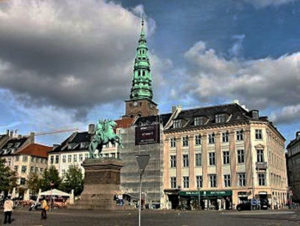
Höjbro Plads at the end of Gammel Strand, the equestrian statue of Bishop Absalon in the center.years ago. Sankt Nikolaj kirke in the background.
When I was very young I had seen the entire fishmarket with a great number of stands, going down Gammel Strand and onto Höjbro Plads where bishop Absalon, supposedly the founder of the city of Copenhagen, sits on his equestrian statue. That was probably in the mid-thirties when I was a student in Lund. I know I was there with Roland who was going to become my first husband. We did a few nice things too.
I had been there earlier however, most likely with fiends from school. So I knew the illustrious fish-market quite well, even if we didn’t know how historical it was or that it was pretty soon going to become history altogether.
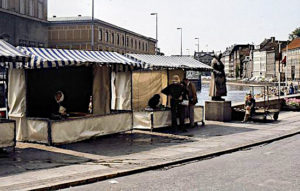
Twoof the last remaining fish selling stands at the end of Gammel Strand. John is sitting next to the statue (1971)
The fish were sold by fishwives, called skovserkoner (fishwifes from Skovshoved). They were known for their distinctive white head garb, which in winter was pulled well around their ears, while their dresses were padded out with newspapers against the cold. Until the 1900s, the fishwives had walked from Skovshoved, a fishing hamlet north of Copenhagen, with their wares bundled around their necks, to sell the fish caught by their husbands. Later, when the fish were peddled from the South Harbour, the name Skovserkone survived.”
Some stands were still there in 1971, John’s and my first visit together, but only just a couple of stands. What is left now is a wonderfully life-like statue, in what looks like cement, of a fishmonger woman.3
On 13 March 2008, Doris Marx sold the last fish from her stand at Gammel Strand. For 45 years, she had tended her market stand, and her departure closed a chapter in Denmark’s cultural heritage. Copenhageners had bought their fish at Gammel Strand possibly for centuries, but in the end space became too scarce and in 1958 a new fish market opened in South Harbour.
On Gammel Strand (the old strand), a street that runs along one side of one of many canals in Copenhagen, Slotsholmens Canal, you can also find the two best fish restaurants in this city, Krogs Fiskehus and, right next to it, Fiskehuset where John and I have had a couple of wonderful meals. They serve you your little glass of Aalborg aquavit and leave the bottle on the table with a friendly smile. That definitely adds to the friendly atmosphere, and also incites you to have a second glass.
You walk among the hundreds and hundreds of cyclists along the wide and narrow streets to Gråbrödretorv to eat delicious deep-fried plaice at Scott’s restaurant. Alas, this friendly and good restaurant does not exist any more. When we were in Copenhagen with John’s parents in 1982 we found that it was gone. Oh well, times they are a’changing.
You stroll from Kongens Nytorv down to Nyhavn which has become a cleaned-up and chic place for today’s international tourists to visit in droves. Maybe the tourists are trying to imagine what this once famously sinful and dingy row of cafés used to be like.
Tivoli
If you follow the walking street Strøget from the Kongens Nytorv (the King’s New Plaza) and all the way to Copenhagen’s main artery, Vesterbrogade, you will soon find yourself at the big entrance Tivoli.
You must go inside and take your time looking at the wonders of this amusement park, which is so much more than an amusement park. It’s unique in the world.
Taking a day trip to Copenhagen was, before the war, quite a common thing to do for people in Malmö. We would visit one of its many fun and beautiful attractions, such as Tivoli, the Zoological Garden, the Copenhagen Zoo or the gorgeous botanical gardens if you are a flower lover.
When I and cousin Kerstin, the daughter of Uncle Gunnar, Pappa’s brother, were both 5, and cousin Kjell probably 8 like Gun, we went to Tivoli one Sunday. Kerstin and I rode on the children’s merry-go-round. We were sitting in some kind of toy cars, and Mother took a picture that I have sadly lost. All I have is a photo of Gun, me and cousins at a fountain in the beautiful grounds at Tivoli. I am wearing the awful hat that Mother made me wear in the winter because of my ear problems. Gun is a real lady with a very nice coat and hat and her hands elegantly folded in her lapt. I, as usual, am having a problem with the sunlight.
Of course when the war was over, the custom of strolling around Copenhagen to enjoy its wonderful sights and Gemüt, was reborn. John and I have spent many unforgettable days in Copenhagen. Among other things we took the above pictures and many more.
The unbelievably beautiful flower and fountain arrangements, the Chinese pavilion with – what else — a restaurant, the duck ponds with weeping willows drooping over the water next to a Tudor style old farm house. And there is the Moorish Palace, a huge white building, with a hotel and a restaurant. What isn’t to be found at Tivoli? It’s a city of dreams.
Tivoli Concert Hall is a classical concert hall featuring concerts with some of the most internationally renowned conductors forclassical music. And of course there are the standard stages where international celebrities sing and where acrobats climb high masts to perform their breathtaking acts. And there are rides for all ages, a roller-coaster made out of wood from 1914, probably the oldest one in the world of its kind, a fun house and a mirror hall and everything imaginable.
Even as a 5-year-old before the war, I had a wonderful time with our cousins in the kids’ merry-go-round, followed up with ice cream and cotton candy and walking around with my hand in Pappa’s firm and secure hand. That was before the war broke out, in Europe and in my family.
Also, can you believe it, when I was a young girl, there was a real flea circus, maybe the only one in the world, or the last one, at least in Europe. Once, much later on, when I was there with John and I asked someone who worked there where the flea circus was, he laughed and told me that it had been gone for many many years. Oh well… but I have the clearest memories of the race between the fleas that the man had them perform, hooked up to minuscule ‘carts’. Close to unbelievable. I suppose the man died of old age and that was the end of the flea circus.
Copenhagen is one of those very special cities that you want to visit again and again. You fall in love once and you live with that love for ever. The Danish Gemüt, the good-humored Danes, is of course one of the contributing factors to the strong attraction you develop to this wonderful city.
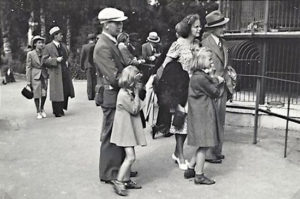
At the Copenhagen Zoo. Pappa, wearing a hat, is in the front with Gun. I am behind. Monkey cages I think..
And I have barely mentioned the beautiful royal palaces, the fairy-like botanical garden or the Copenhagen Zoo. This was the first Zoo I had ever been to, and being an animal lover I was fascinated and amused, by the monkeys for instance.We my family went there once with friends from Vaggeryd, Eva, Dr Lindblom’s oldest daughter who was especially Mother’s friend and her fiancé visited us in Malmö.
In later days I miss the streetcars that were already gone when I returned to this city in 1971 with my now husband John. This year 197° – 71 was a one-year interlude in my many years in the United States. And it was the year that John and I met in Paris.
I know the three capitals of Scandinavia fairly well and I love them all. Stockholm, situated partly on islands on lake Mälaren, is a jewel among big cities of the world, but it has none of the Gemüt you find in the Danish capital. Oslo is a relatively small capital but with lots of beautiful sites, the view over the water, Oslo Bay (Oslofjorden), and museums with impressive huge Viking boats, the real ones, not copies, the fascinating balsa-wood raft Kon-Tiki at the Thor Heyerdahl Research Foundation – just to mention two museums that are very special to Oslo. And, not to be forgotten, the wonderful Oslo Folkemuseum (the Norwegian Museum of Cultural History) where you can see how people used to live, a long time ago. Norwegians are friendly people, even though not as open and ready to laughter as the Danes.
Copenhagen is simply unique.
Continued: Chapter Three – Lapland and Lofoten, Norway
- Arne participated greatly in the discovery of what was hidden under centuries of dust at Drottninghjolms’s theater, which dated from the time of Gustav III, the theater king, or more precisely from the time of his mother queen Lovisa Ulrika in the late 18th century. More about Professor Agne Beijer in Chapter 13 – Arne and Drottningholm Theater ↩
- Much more about Malmö in later chapters – ‘Chapter 4 – My youth and the theater’ and school and the war in Chapter 6 (Part 1) – Studies and an interlude about World War II ↩
- “The last fishwife” ↩


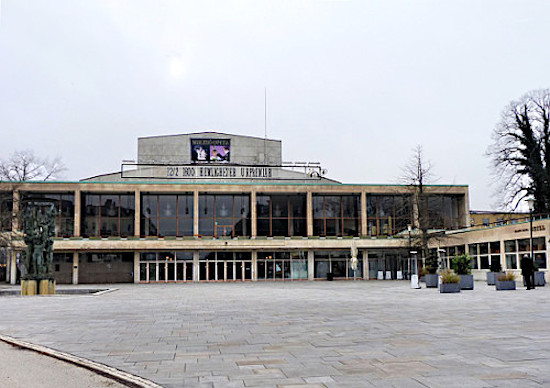
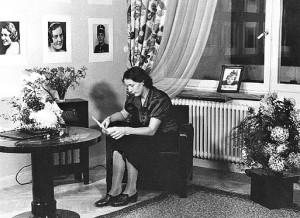
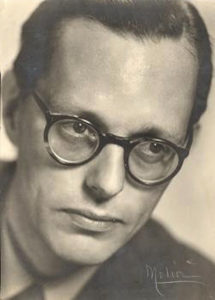
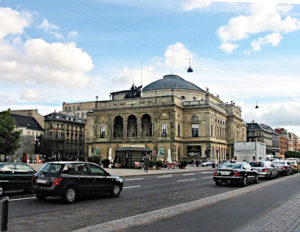
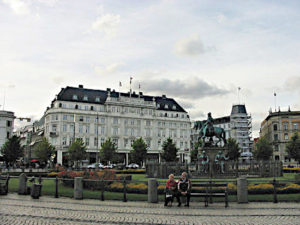






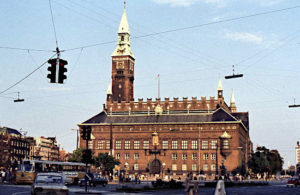
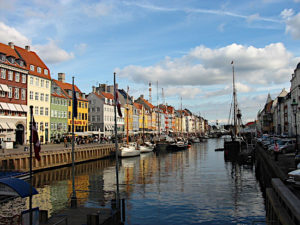
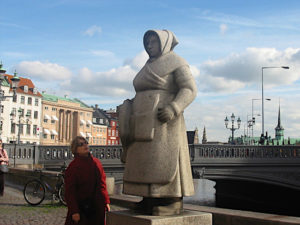
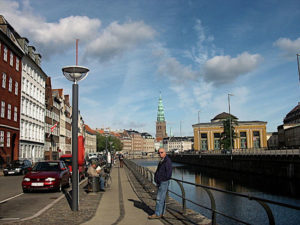
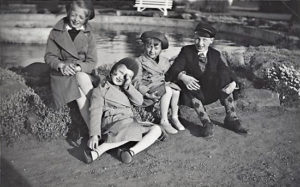







Pingback: Sketches from the Life of a Wandering Swede | Siv’s sketches from her life